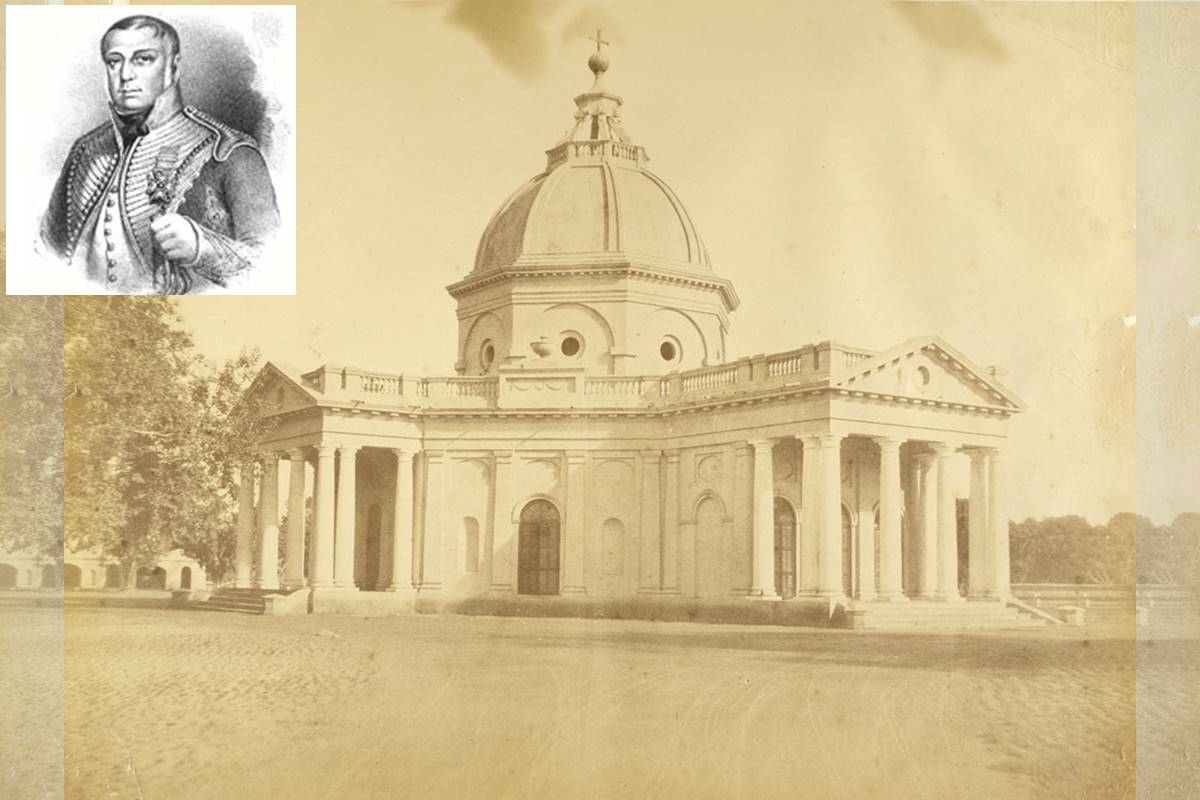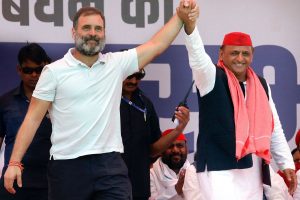“Few churches in India can claim a story more romantic than that associated with St James’ in Delhi ~ a story that goes back to the beginning of the 19 th century when a soldier, left dying on the battlefield vowed to build a church if his life were spared. The soldier (Col James Skinner) not only survived to fulfil his vow, but lived to see the day when the noble monument of his piety was consecrated and named after his patron saint. That was on November 21, 1836,” says on account published by the St James church’s parish council in January, 1961.
Renovation and excavation have thrown new light on this heritage site about whose prereservation Pat Sedwards, a descendant of Col Skinner living in England expressed her concern in an email to this scribe about the damage that may be caused to the church by the Delhi Metro line passing through it.
Advertisement
The history of the church, the oldest in Delhi, is a story of steadfast faith and courage, adds the parish account. Son of Scottish father and a Rajput mother, James Skinner was born in Bengal in 1778, and grew up to become a legendary figure in his lifetime. “While young James was struggling with the hardships and misfortunes of his early life ~ working as an apprentice in a printing house or looking for petty jobs in the Calcutta bazaar ~ India was passing through a period of political instability and administrative disorganisation. Delhi was witnessing the decline of Mughal glory; and in the territory surrounding the imperial city there was chaos and confusion, with Rohillas and Rajputs, Sikhs and Jats, vying with one another to claim what was left of a decadent empire.
While the British Presidencies of Calcutta, Bombay and Madras were as yet isolated areas surrounded by continual turmoil, elsewhere in the country the Maratha chieftains were contending among themselves for supremacy, with one eye on the prize offered by Delhi and the other on the challenge inherent in the doings of the East India Company.
“It was against this background (the account elaborates) that there emerged a number of military adventurers ~ Europeans and Eurasians ~ who set out to seek fame or fortune and were willingly employed by the warring rulers. It was such a career that James Skinner sought, and he succeeded in no small measure in achieving both renown and riches.
“James Skinner not only distinguished himself by his prowess on the field of battle, but commanded respect by his exceptional gifts of organisation and leadership. For eight years ~ till he left Scindia’s service in 1803 ~ he took part in a series of plundering raids and sanguine battles, living the life of an Indian soldier, adept in the use of bow and arrow, sword and lance, and an expert in the Maratha tactics of rapid manoeuvres and wild, lightning charges. On one such campaign, in January 1800, he faced the supreme trial of anguish and pain, so dangerously wounded that he was abandoned for dead.”
The pledge to build a church took some years to fulfil ~ years that saw the second phase of James Skinner’s military career. In 1803, when war broke out between the British and the Marathas, Scindia dismissed all his English and Eurasian officers.
James Skinner could not resist the temptation of continuing his military career and decided to join the British forces under the command of Lord Lake. Skinner accompanied Lord Lake when he entered Delhi in triumph in 1803 after the Battle of Delhi at Patparganj.
“It was common practice at that time to recruit men for irregular forces from among prisoners of war. After the Battle of Delhi, when Lord Lake asked a group of such men whom they would have as their commander, the unanimous cry was “Sikander Sahib” ~ that being the name by which James Skinner was known to Indian soldiers. This was the beginning of the famous force of irregular cavalry, which to this day (though now mechanised) is known as Skinner’s Horse. These redoubtable cavalrymen are also known to history as the “Yellow Boys”, named after their distinctive bright yellow uniform. A scion of Skinner, Brig Michael Skinner was in command of this unit of the Indian Army till his retirement and death some years ago.
James Skinner justified the trust of his general and the faith of his men, winning fresh laurels and achieving greater fame. He established his headquarters in Hansi, in Punjab ~ where his descendants still live at Sikandar Bagh ~ and held command of his much-honoured force till his death in December 1841, at the age of 63.
“It was in the later years of his life that his rank and seniority were regularised: James Skinner was given the rank of Lieutenant-Colonel in the British Army and made a Companion of the Order of the Bath (C.B.). In recognition of his meritorious services, the British administration in India gave him grants of land, and as he acquired more property he became a moneyed landlord, with considerable estates in Bulandshahr district (in UP) and in Hansi. He also acquired a house in Kashmere Gate in Delhi, where he spent many happy days, lavishly entertaining his friends or enthusiastically discussing plans for his church, which was built in a spacious park opposite his home.
“Why did James Skinner decide to build the church in Delhi, and not in Hansi or Bulandshahr? The story is told that when he entered the imperial city with Lord Lake in 1803, Skinner was struck by the beauty of its magnificent mosques and mausolea. He was equally taken aback by the absence of a church ~ a fact which, no doubt, redoubled his resolve to fulfill his vow.
“It is also narrated that when he was resident at his Kashmere Gate house, James Skinner repaired a mosque that lay in ruins in the compound. When this action gave rise to comment, he replied that, though he respected Mohammedans, “he reverenced his own religion far more, and would prove it, if God preserved his life,…by building a Christian church.
“Thus it was a vow thrice pledged that inspired the building of the beautiful church so familiar to us today and loved deeply by the many ~ even from distant lands ~ who have had the privilege of worshipping here. James Skinner spent a fortune on its construction and embellishment ~ estimates vary from 10,000 pounds to 20,000 pounds ~ and was present on the day when it was consecrated by Daniel Wilson, Bishop of Calcutta and the first Metropolitan of India.”
Colonel Skinner, on his death was buried in Hansi, but a month later his body was brought to Delhi to be re-interred in the church of his creation. Moving scenes were witnessed in Delhi on the day of his funeral. St James’ is the final restingplace not only of Colonel James Skinner but also of a number of other members of the Skinner family, some of whom died outside Delhi. Their graves and memorials are in an enclosure in the gardens facing the northern entrance to the church”.
Skinner’s Church, as has been stated earlier, was built in perpetuation of a vow on the battlefield of Oniara, in Haryana, in which Skinner nearly died. It is worth mentioning the incident in his own words: “The Oonehara Rajah soon became aware of the badness of our troops and crossed the river on the 25 th of January (1800)…Two of the enemy’s battalions came up to attack me but I charged and drove them away”. Later Skinner found that of his 300 men, only 10 were now with him.
Skinner goes on to say, “As I was going to follow them (search for the other 290 men), a horseman galloped up, matchlock in hand, and shot me through the groin. It was about three in the afternoon that I fell and I did not regain my senses till sunrise next morning…I crawled under a bush to shelter myself from the sun. Two more of my battalion crept near me ~ the one a soobahdar, that had his leg shot off below the knee, the other a jemiadar had a spear wound through his body. We were now dying of thirst, but not a soul was to be seen; and in this state we remained the whole day, praying for death. Night came on but neither death nor assistance. The moon was full and clear and about midnight it was very cold. So dreadful did this night appear that I swore if I survived to have nothing more to do with soldering…the wounded on all sides, including his brother, crying for water ~ the jackals tearing the dead and coming nearer and nearer to see if we were ready for them. We only kept them off by throwing stones and making noises. Thus passed this long and horrible night (Hijr ki raat). Next morning we spied a man and an old woman, who came to us with a basket and a pot of water and to every wounded man she gave a piece of joaree (jowar) bread and a drink from her water pot. But the soobahdarwas a Rajpoot, he would receive neither bread nor water from her (as she was of a lower caste) so he preferred to die unpolluted.”
This was the woman whom the Colonel from then on regarded as his mother.











